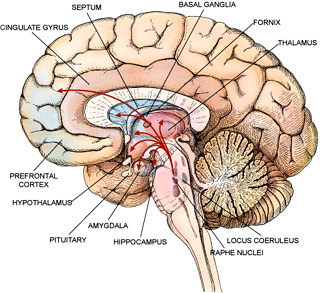
The Los Angeles Times has an article on brain injuries, and the long-term impacts such injuries can have on those who survive. The story of Rep. Gabrielle Giffords created the national relevance for the story, but Iraq and Afghanistan wars, combined with better medical care, have shown just how tough the brain is, and how it is able to find remarkable ways to heal itself after a catastrophic injury.
Such havoc, you would think, would put an abrupt end to the brain’s rhythmic buzz of activity and extinguish the life defined by its complex inner work-ings. But — as the awakening of Rep. Gabrielle Giffords has demonstrated these last weeks — the human brain can be resilient, capable of withstanding brutish damage and then masterminding its reconstruction.
The brain is a marvel of redundancy, parallel networks and interlocking message centers that might, with time, rewire around obstacles. But many clusters have precise functions — governing word access or face recognition, or processing vision, hearing and smell. Damage to those can cause specific, maybe permanent, impairments.
People with severe brain injuries rarely fully recover. As the article points out, even those with miraculous recovery face a life of side-effects to the original injury. But many victims can go on to lead “normal” and productive lives.
Click here to read the entire L.A. Times story.
The Walton Law Firm represents individuals and families who have been impacted by all types of injury-producing incidents, including auto accidents, product defect cases, assault and battery, wrongful death claims, worksite injuries, elder abuse and neglect, sexual molestation, pedestrian injuries, construction accidents, property injuries, and malpractice matters. Call toll free at (866) 607-1325 or locally at (760) 571-5500 for a free and confidential consultation.
 North County San Diego Injury Lawyers
North County San Diego Injury Lawyers








